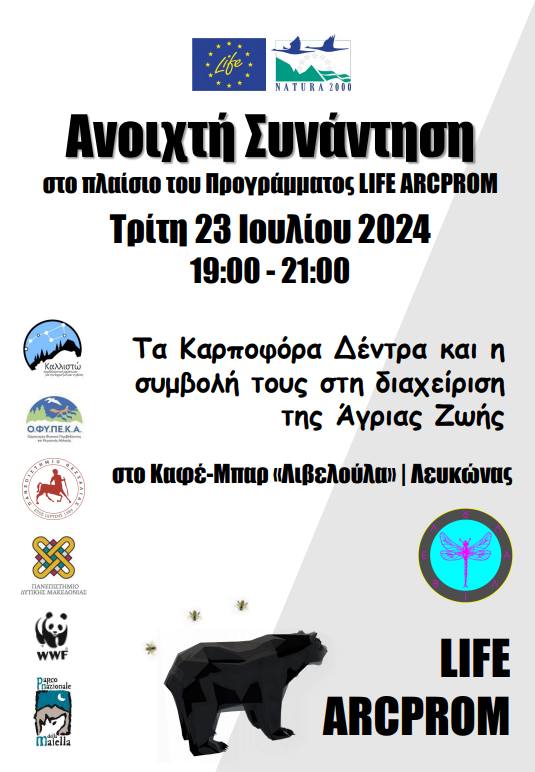Open Meeting with the Local Society | “Fruit trees and their contribution to wildlife management”
Open meeting with the local community in the area of Prespes on the topic “Fruit Trees and their contribution to Wildlife Management” is organized by the Environmental Organization Callisto in cooperation with the Management Unit of the Prespes National Park and Protected Areas of Western Macedonia of OFYPEKA, in the framework of the European LIFE ARCPROM project.
The meeting will take place on Tuesday 23 July 2024, at 19:00 – 21:00, at the café bar “Liveloula” in Lefkonas and aims to inform the local community about good practices for the optimal management of fruit trees. The meeting will be attended by Dr. Nikos Nikisianis, biologist, who will present the results of the Ecovariety project. Afterwards, a mapping of abandoned fruit trees and old community orchards located in the area will be carried out. This will be followed by a discussion with representatives of the local community.
The combination of the climate crisis and the abandonment of the Greek countryside have left their mark on ecosystems and the behaviour of wild animals, such as the brown bear. Bears feed mainly on fruit trees, during a period of about 6 months each year, due to the timing of fruit ripening. However, a combination of factors, such as the proximity of fruit trees to residential areas, poor management of household waste, and possible lack of adequate food in the forest, as well as other factors, such as protection of cubs from aggressive males, may drive them to forage closer to human settlements.
There are many reasons why a bear may enter a settlement. Some of these are related to habitat loss, fragmentation and degradation, the ease of finding food in household waste (garbage cans) and some specific behavioural characteristics of females with cubs. Addressing this challenge requires a multi-dimensional approach that combines monitoring and possible improvement of natural food sources and habitat restoration for the brown bear, informing residents on the adoption of protection and damage prevention measures, and the cooperation of different stakeholders to implement coordinated actions.
For example, maintaining old orchards in the forest vegetation zone and planting new fruit trees in safe areas, away from settlements, can help improve food availability and reduce the need for them to approach close to residential areas. At the same time, proper care and fencing of fruit trees within settlements, as well as optimal management of household waste, can help to change the “habituation” behaviour of some bears to human presence and activity.
It is noted that the 6th meeting of the “Local Communities-Bear Coexistence Platform”, which is composed of representatives of local institutions, organizations and other stakeholders related to the presence of bears in the area, will take place the day before the open meeting.
The meeting will consider how we can better manage fruit trees in the National Park and how we can encourage the restoration of abandoned orchards and the planting of new orchards and fruit bushes.







